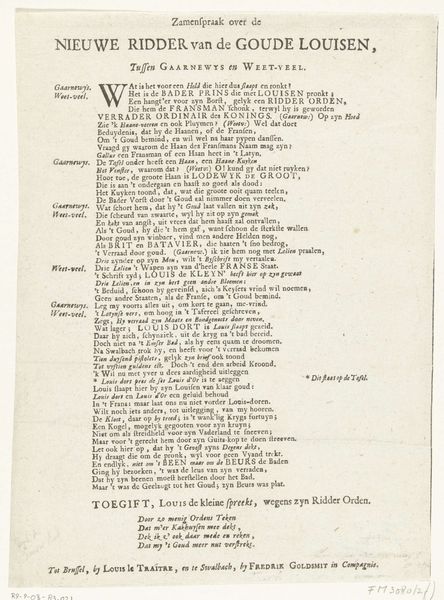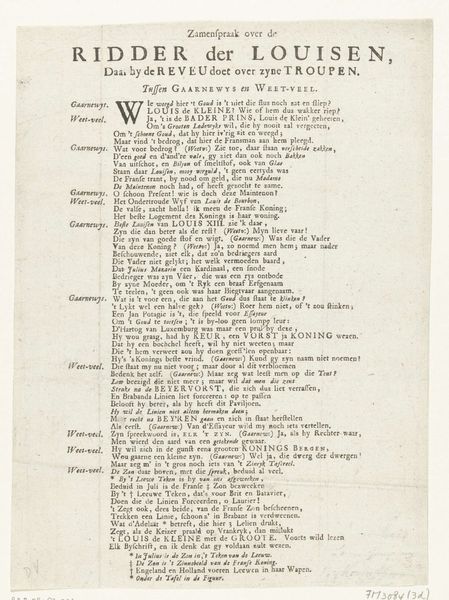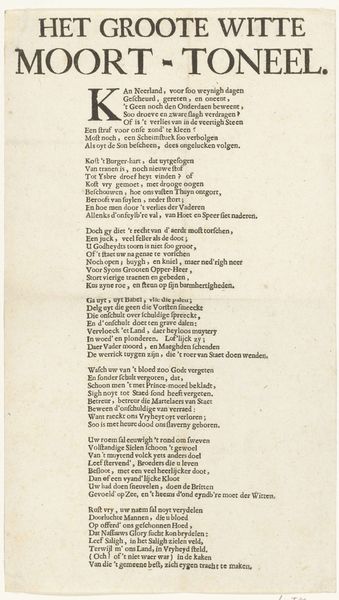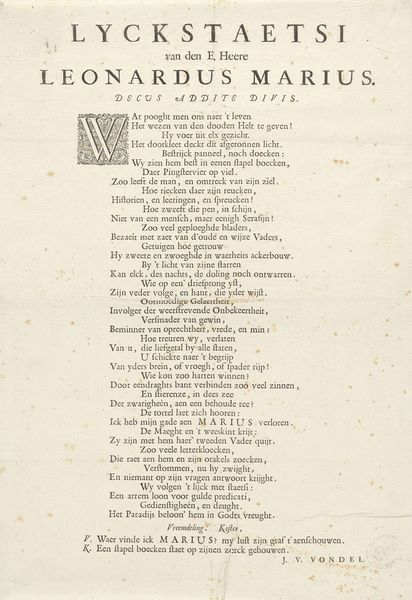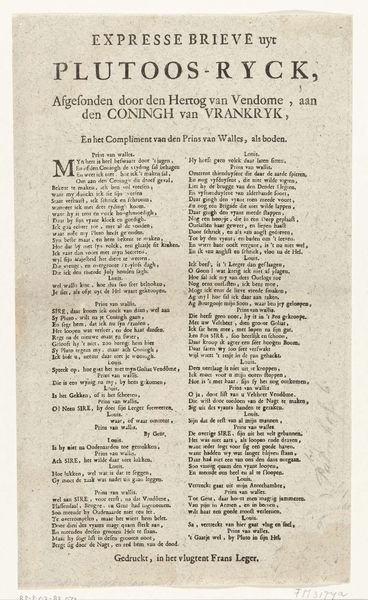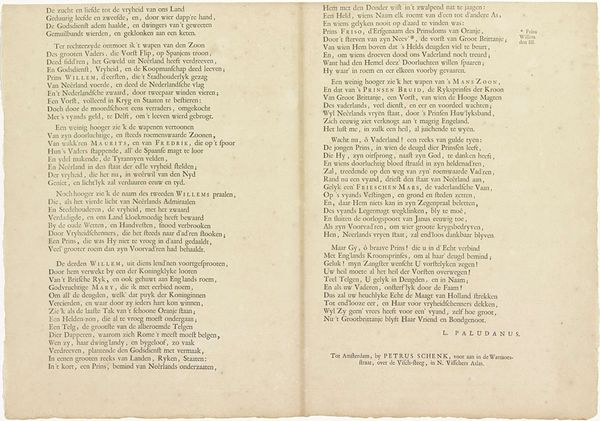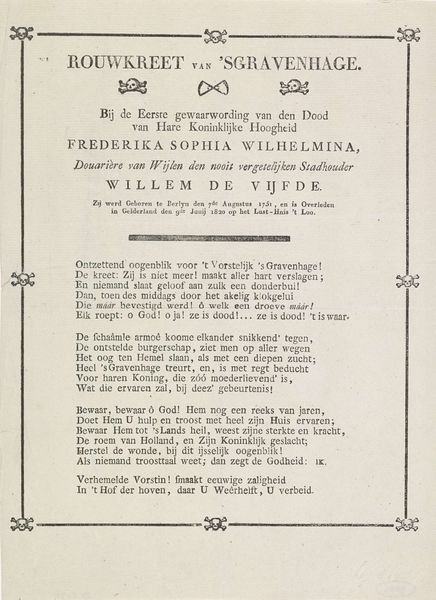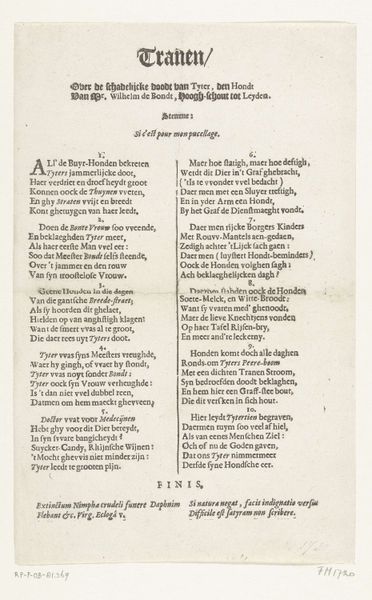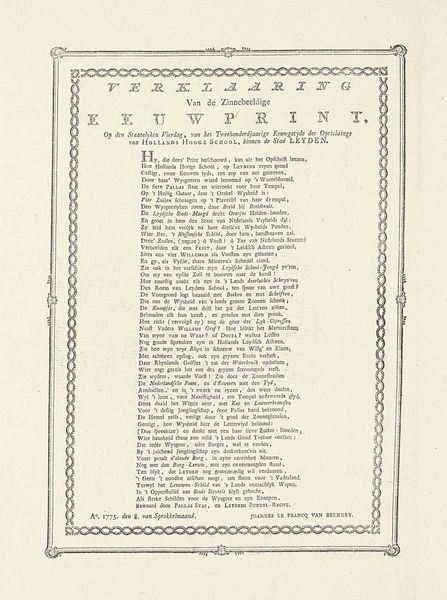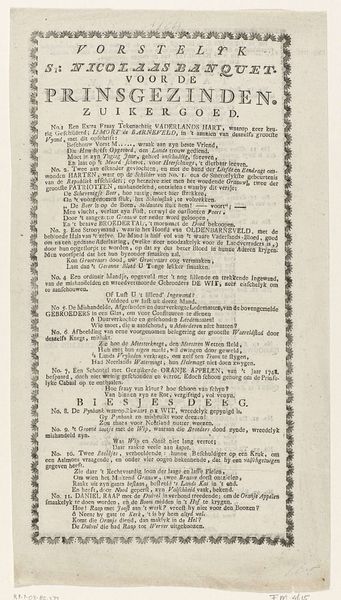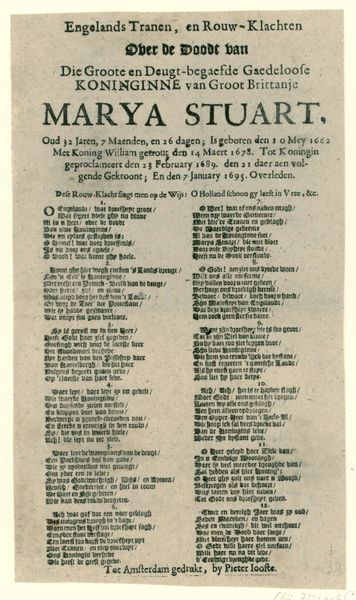
print, typography
#
dutch-golden-age
# print
#
typography
Dimensions: height 138 mm, width 130 mm
Copyright: Rijks Museum: Open Domain
Editor: Here we have a 1672 print called "Het vers bij de prent van de Bisschop op de Bagijn" from an anonymous artist at the Rijksmuseum. It’s text-based, primarily typography, and it strikes me as a... polemic. What's your take on this piece? Curator: From a materialist perspective, let’s consider the printing process itself. Typography in 1672 wasn’t just about conveying information; it was about crafting a persuasive argument through mass production. The very act of printing and distributing this text indicates an attempt to engage with, and shape, public opinion about the political or religious turmoil. Consider the paper and ink – readily available, consumable goods – used to disseminate this pointed message. What kind of audience do you think it was designed to reach? Editor: I imagine it would have reached a literate, possibly middle-class audience invested in the political and religious debates of the time. Was it intended to sway them or reinforce existing beliefs? Curator: Exactly! Now, thinking about materiality again, the act of printing makes this ephemeral – think leaflets or pamphlets intended for circulation and, perhaps, immediate consumption. This is not precious art meant for a wealthy collector. Instead, it uses reproducible media to communicate a powerful message in an accessible manner. Do you think the form enhances its persuasive function? Editor: I think so. It’s much harder to ignore something that’s literally handed to you, reproduced en masse. Knowing the material conditions surrounding this print really shifts my understanding of its intent. Curator: Indeed. And understanding the production allows us to investigate the socio-political background where it was born: labor division, censorship, cost. These kinds of prints offer rich insights into the power structures of the 17th century. What are you left considering? Editor: I am contemplating how ordinary materials like paper and ink could be weapons for communicating controversial views and shaping people’s thoughts during the Dutch Golden Age. Thank you.
Comments
No comments
Be the first to comment and join the conversation on the ultimate creative platform.
